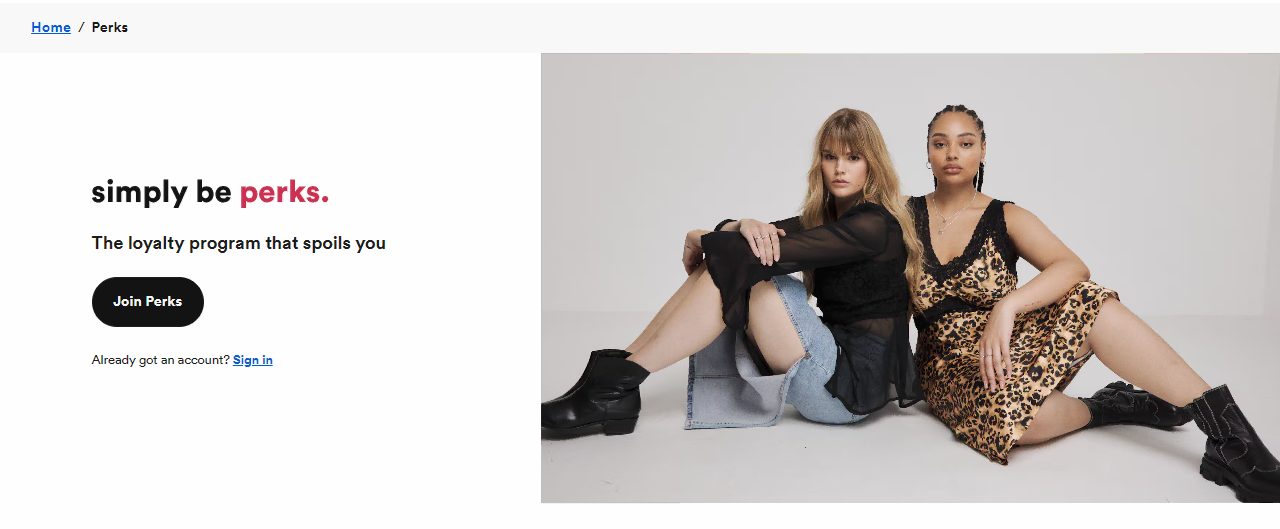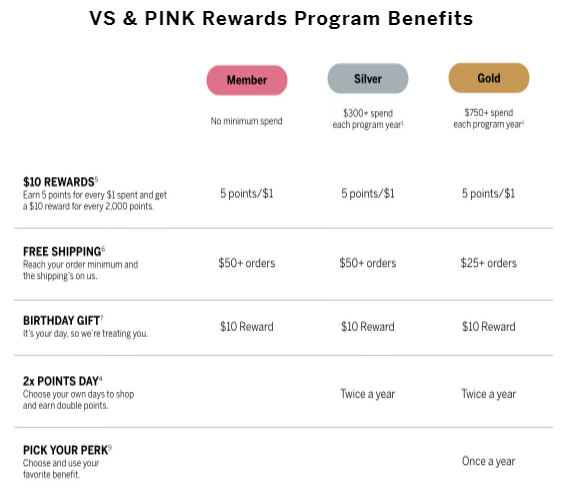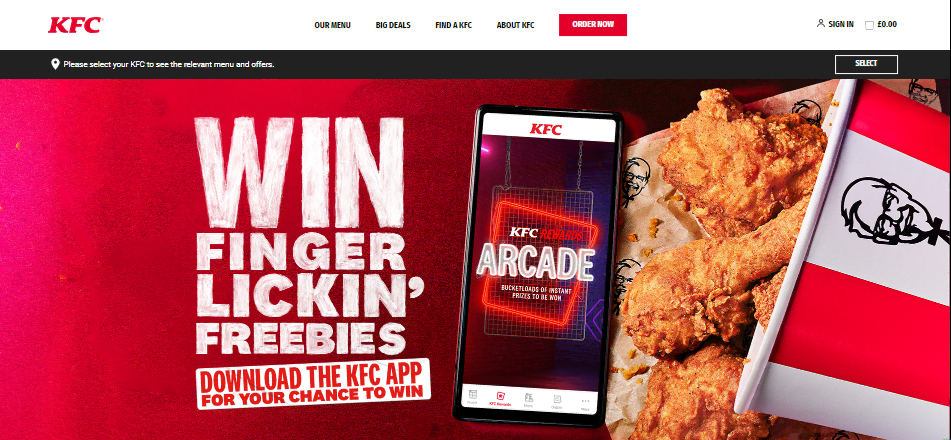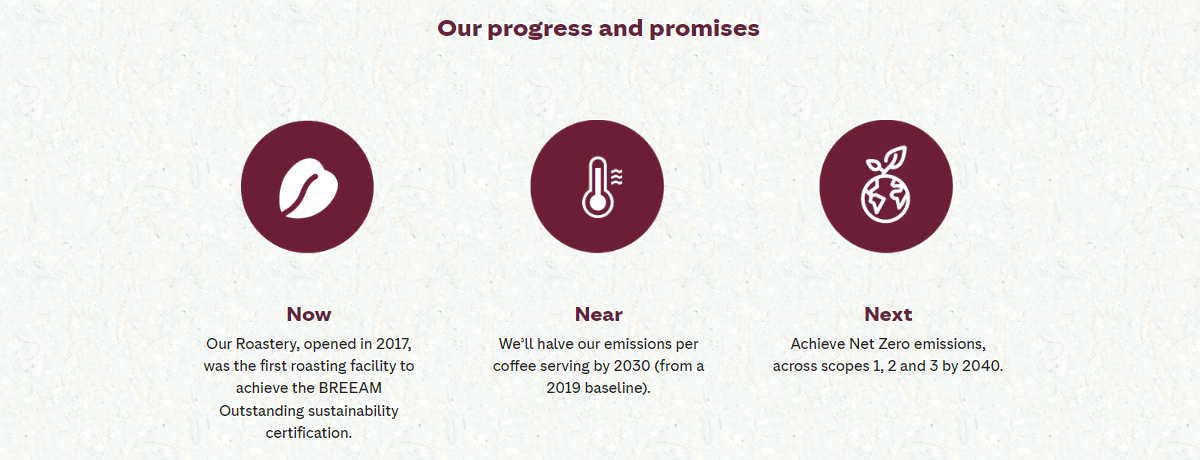
In an incredibly competitive marketplace, a well-thought-out loyalty program is not just a perk but an essential tool for building customer trust and loyalty. As businesses compete for the consumers’ attention, the challenge lies in not only attracting but also retaining customers. Traditional loyalty programs, while useful, often lack the engagement factor that keeps customers interested. This is where gamification loyalty programs come into play. By incorporating game-like features, you can captivate customer attention more effectively. This strategy not only encourages repeat business but also improves the overall customer experience. After all, the allure of games lies in their ability to offer fun and interactive experiences – a quality that can transform the way customers perceive and interact with loyalty programs.
What is Gamification?
In regular practice, gamification is used in contexts like education, fitness or workplace productivity to increase engagement and motivation.
In ecommerce and retail loyalty marketing, it is specifically used to make shopping more engaging and rewarding, like a mini-adventure or a fun quest.
How does this magic work? When customers earn points for purchases, referrals, and social interactions - or level up through tiers to unlock exclusive perks - it’s like advancing in a game, where each new level brings greater rewards, status, and excitement. Similar to earning points in a game, customers can accumulate rewards from a store or e-commerce platform and redeem them for discounts, free products, or special offers. This gamified loyalty program approach makes shopping an addictive and rewarding journey, motivating customers to engage more with a website or app and encouraging repeat purchases.
I still remember the thrill of playing Metal Gear Solid and Twisted Metal 2 on the PS1, or Mortal Kombat on the SEGA Genesis. Those games transported you to another reality, offering excitement and a sense of achievement. People love games because they are engaging, challenging, and rewarding - stimulating key areas of the brain that trigger dopamine release. Businesses tap into this same psychological effect by incorporating game-like mechanics into loyalty programs. Gamification encourages customers to interact more actively with brands, fostering loyalty and repeat business through the excitement of unlocking new rewards and experiences.
Gamification: A Game-Changer for Customer Loyalty
Gamification has a powerful impact on customer loyalty, making shopping more engaging, rewarding, and habit-forming. It is fun, highly effective, and directly influences consumer behavior and engagement. This approach works particularly well in the retail sector, both in physical stores and online. Companies that incorporate gamification into their loyalty programs gain a significant competitive advantage.
Businesses with gamified loyalty programs featuring virtual badges, points, and exclusive perks - see a 22% increase in customer retention, proving that interactive rewards keep shoppers coming back. The fun element of gamified campaigns also drives a 100%-150% jump in user engagement compared to traditional marketing methods. Additionally, websites with gamification features experience a 29% boost in engagement, demonstrating how interactive elements encourage more frequent and meaningful customer interactions.
Features like challenges, progress bars, and surprise rewards tap into customers’ psychological drive for achievement and competition. This not only boosts brand interaction but also strengthens long-term loyalty by making the experience enjoyable and rewarding. When customers collect points, level up, or unlock exclusive perks, they feel excited and motivated to keep engaging. The sense of achievement and special rewards deepen their emotional connection with the brand, driving repeat purchases and lasting loyalty.
Core Elements of Gamification
Gamification has become a crucial component of modern marketing strategies. By understanding the core elements of gamification, businesses can also create a loyal brand community and improve customer acquisition. Here’s what makes a loyalty program gamified:

Points-based system
Members of the loyalty program accumulate points through purchases or referrals. These points can be exchanged for rewards, discounts, and exclusive offers, motivating customers to stay engaged with the brand.
Levels and progression
Loyalty program members begin at the basic level and advance by purchasing items or completing specific tasks. As members accumulate points, they unlock new levels or tiers. Each new level offers additional perks, discounts, or gifts, encouraging ongoing engagement and fostering a sense of accomplishment.
Challenges and missions
Members complete tasks such as visiting a certain number of stores, purchasing new products, or participating in brand events. Completing these tasks or missions earns them bonus points or exclusive access to limited offers. These challenges and missions make the loyalty experience more fun and interactive, incentivizing customers to continue participating.
Badges and trophies
Users earn badges for various accomplishments, including completing challenges, reaching key milestones, and demonstrating consistent participation. These badges and trophies symbolize the customer’s achievements and help track their progress toward loyalty program goals.
Spin-to-win games
Incorporating a spin-to-win game introduces an exciting element of chance to loyalty programs and instant-win opportunities. Customers spin a virtual wheel for a chance to win discounts, free products, or prizes.
Punch cards
Digital punch cards are the modern evolution of the classic loyalty card, tracking customer activity through mobile apps and rewarding them after a set number of purchases or actions. This straightforward system promotes repeat business and can be customized with tiered rewards or personalized offers to improve customer engagement.
One of our successful cases is Doodle Dogs, a retail pet store that used Growave to launch a loyalty program with gamification elements. By 2024, this strategy proved highly effective, with an impressive 25% of their total revenue coming from customers actively participating in the punch card rewards program.
Milestones
Milestones are essential goals that users strive to achieve to earn rewards like free products, bonuses, and more. They reach these goals by completing specific actions, such as making a certain number of purchases, maintaining a membership for a specified duration, or engaging with the brand.
Leaderboards
Leaderboards tap on customers’ competitive nature by letting them earn points or achievements for activities such as purchases or reviews. This motivates users to engage more with the brand, as they strive to climb the ranks and earn rewards, making the experience both enjoyable and rewarding.
Quizzes
Quizzes in gamified loyalty programs engage users by testing their knowledge about the brand or products. Correct answers usually result in points, badges, or other rewards, which promote learning and deeper brand interaction.
Benefits of Gamification in Loyalty Programs
Gamification loyalty programs encourage shoppers to keep coming back, much like players returning to their favorite game to beat their high score or complete the next level. This way, shopping isn’t just about buying necessities - it’s also about having fun and earning rewards along the way.
A gamified loyalty program comes with a range of advantages. Here are some key ones to consider:

Increased Customer Engagement
Loyalty program gamification enhances the shopping experience, making it more enjoyable and, in turn, boosting both customer engagement and loyalty. Points, tiers, quizzes and leaderboards in loyalty programs encourage users to engage with the brand more regularly and on a deeper level.

Enhanced Customer Retention
Incorporating gamified elements into loyalty programs adds joy to the retail experience and improves customer retention. This strategy increases the likelihood that clients will remain loyal to the brand, as they feel more valued and engaged.

Strengthened Brand Loyalty
Gamified programs create a stronger emotional connection between brands and their shoppers. As customers achieve their goals and receive rewards, their loyalty to the brand strengthens over time. This increased loyalty enhances the likelihood that they will remain loyal to one brand, even when faced with an abundance of choices.

Valuable Customer Data
Gamification opens the door to data acquisition by providing insights into customer preferences and behavior. This valuable data can then be analyzed, allowing businesses to develop more personalized marketing strategies and improve product offerings.
Higher Sales and Revenue
When customers are more engaged and appreciated, they are more likely to stick around and make a purchase. Gamification can directly influence consumer behavior by linking rewards to purchase-related actions, such as awarding points for spending specific amounts. This strategy can lead to an increase in overall sales and revenue.
For example, e.l.f.’s Beauty Squad loyalty program lets customers earn and redeem rewards while progressing through tiers.

Differentiation from Competitors
A well-designed gamification loyalty program can help a brand stand out from its competitors. Incorporating unique gamified elements can provide more value, attracting new customers and keeping existing ones engaged.
Excellent Customer Experiences
Gamified approach can transform a routine transaction into an enthralling experience. For example, a simple purchase or social media referral can become a part of a larger, enjoyable game that enhances customer satisfaction.
Increased Social Interaction
Many gamified loyalty programs include social elements that boost communication between users, such as sharing achievements on social media or competing with friends. This not only increases user engagement but also improves brand advocacy.
High Scalability and Adaptability
Gamification elements can be scaled or adapted based on the success of the program and changing customer preferences. This flexibility allows companies to keep the program fresh and relevant, maintaining customer engagement over the long term.
Implementing Gamification in Loyalty Programs
Businesses are using gamification in loyalty programs to boost customer engagement and retention. Strategic planning and implementation are crucial to ensure these game-like features effectively encourage repeat purchases and build stronger brand loyalty.
Planning and Strategy
When implementing gamification in loyalty programs, careful strategy and planning are crucial to ensure that the system aligns with business goals and meets the ever-evolving expectations of customers. A well-thought-out strategy helps identify the right game mechanics that will interest customers and encourage desired behaviors. Planning ensures that gamified elements are seamlessly integrated into the program, avoiding confusion and maximizing user experience. Without thorough planning, the gamification might feel forced and irrelevant, leading to customer churn and disengagement. Finally, a strategic approach enables continuous evaluation and adjustment, ensuring the program remains effective and appealing over time.
Technological Integration
Technological integration in gamified loyalty programs involves using customer loyalty management solutions and loyalty marketing platforms to increase customer engagement and drive customer retention. Loyalty marketing platforms like Growave offer tools that allow Shopify owners to incorporate game-like elements, such as points, VIP tiers into their loyalty programs. These features make earning rewards fun, easy and engaging for customers, encouraging repeat business and stronger brand loyalty. The integration of such technology also allows for more accurate tracking and analysis of customer behavior and preferences, enabling businesses to tailor their marketing efforts more effectively. Additionally, these platforms can seamlessly connect with e-commerce stores, allowing customers to participate in the program without any issues.
Monitoring and Analytics
Monitoring and analytics are crucial when implementing gamification in loyalty programs because they help you understand how customers are interacting with the program. By tracking customer behavior, such as participation rates and engagement levels, you can understand which components of the program are effective and which require improvements. Analytics also allows you to measure the program’s effectiveness in driving desired outcomes, like increased sales, reduced churn, and customer retention. Without proper monitoring, you risk missing important trends or issues that could jeopardize the program’s success. Analytics help ensure that your gamified loyalty program is not just engaging and fun, but also delivering tangible business results.
Challenges in Gamification
Gamified loyalty programs make earning rewards more fun, which increases engagement and loyalty. Additionally, they are an effective way to ensure the success of your loyalty program. While this strategy is both popular and effective, there are several challenges you need to be aware of:
Complexity: If the gamified system is too complicated, customers may find it confusing or frustrating, which could lead to disengagement and a negative user experience.
Relevance: Not all customers are motivated by the same things. Some people enjoy competing, while others prefer easy rewards. Tailoring the experience to different preferences might be difficult.
Sustainability: Keeping the gamified elements fresh and entertaining over time is difficult. If the system becomes repetitive or predictable, it might lose its appeal.
Cost: Developing and maintaining a gamified loyalty program can be expensive. It requires ongoing investment in technology, design, and rewards.
Ethical Considerations: Gamification can sometimes encourage unhealthy behaviors, such as excessive spending, which may lead to potential backlash. It can also be perceived as manipulative and unfair, potentially damaging brand reputation.
Balancing these challenges is key to successfully implementing gamification in loyalty programs.
Gamification in Loyalty Programs: Best Examples and Practices
Gamification and loyalty go hand in hand. When gamified elements are effectively integrated into a loyalty program, they encourage customers to return and share their experiences. Here are real-life examples of these strategies that enhance customer engagement and significantly boost retention:
01. Xbox Rewards
It's no surprise that Xbox is on our list of the best examples of gamified loyalty programs. Xbox serves as an exemplary case of gamification within a loyalty scheme. Xbox Rewards is part of the larger Microsoft Rewards Program. By encouraging users to interact with other Microsoft services and products, this integration broadens the ecosystem within which users can earn and spend points.
Xbox gamified loyalty programs motivate players to gain rewards through accomplishing different challenges within the game, making purchases in the Xbox Store, taking part in surveys and quizzes, and engaging in other gaming-related activities. This clear connection between gaming behavior and rewards creates a sense of achievement and encourages continued participation. Points can be redeemed for various rewards, including Xbox gift cards, game passes, sweepstakes entries, and even donations to causes. This variety caters to different user preferences, making the program appealing to a broader audience.

These programs work because they appeal to people’s innate drive for advancement, success, and rewards. By gamifying their experience, users feel more motivated to engage with their Xbox and its content, as they can see tangible rewards for their actions. This not only increases customer loyalty but also boosts sales and time spent on the platform.
02. Sephora
With stores all over the globe, Sephora has become one of the biggest beauty retailers from its humble beginnings as a French perfume shop. The well-known beauty and cosmetics retailer has integrated elements of gamification into their loyalty program. Sephora offers various quizzes on its website and mobile app. Quizzes are an effective method to personalize the shopping experience for your customers, and they also serve as a fun and engaging way to reward them. These quizzes are usually about beauty products, skincare routines, or makeup preferences. For example, a quiz might help you find the right foundation shade or recommend skincare products based on your skin type. The results from these quizzes help personalize product recommendations. This makes the shopping experience more tailored to individual preferences and needs, increasing customer satisfaction.

Sephora's quizzes are an interactive way to engage customers, offering personalized recommendations and integrating with their loyalty program to enhance the shopping experience through gamification.
In 2023, the company introduced “Beauty Insider Challenges,” a new approach to the program that incorporates gamification elements. This feature offers exciting “challenges” or enjoyable quests for members to earn extra points. These activities include both online and offline tasks, and not all of them require purchases.
03. Simply Be Perks

Online fashion retailer Simply Be specializes in plus-size women's clothing. Promoting body positivity, they celebrate women for everything that makes them unique. Their rewards program, known as “Simply Be Perks,” is designed to make shopping both engaging and enjoyable. They motivate members to share photos of themselves dressed in their preferred outfits or reveal the contents of their monthly gift box on social media in exchange for points.
They’ve developed a program tailored to the needs of their loyal customers. By incorporating gamification elements such as contests, social sharing, and friend referrals into the program, they have been able to engage and retain their customers more effectively.
04. Victoria’s Secret PINK REWARDS

Victoria’s Secret PINK REWARDS is a good example of effective gamification in a loyalty program. They developed a separate app for its loyalty program. This gamification rewards program effectively engages customers through interactive and rewarding experiences.

The program has 3 tiered levels: Member, Silver, Gold. Higher tiers give more exclusive benefits, and the tiers are determined by annual expenditure amounts. When a customer joins, they are immediately put into the Member tier. The Silver Tier requires an annual spend of $300, while the Gold tier requires $750. With each purchase, members earn points. If a customer uses the Victoria’s Secret Credit Card, they can earn points more quickly. For example, Gold level card holders earn 15 points for every dollar spent. What’s more, the app allows them to collect valuable customer data and increase website traffic.

05. KFC REWARDS ARCADE

In the UK, KFC has introduced the KFC Rewards Arcade, offering customers an equal opportunity to win free KFC menu items. This is one of the best gamification loyalty program examples. The KFC Rewards loyalty program exemplifies the transformative power of gamification, turning an ordinary dining experience into an enthralling journey.
“Loyalty has moved on from points which mean prizes, and brands need to keep up with their customers’ behaviors and motivations. The REWARDS ARCADE is a dynamic way to reward loyalty, customers can have a go, win and claim their prize immediately, making it a win-win for KFC and their guests”.
Rapp UK CEO, Gabby Ludzker
Indeed, gamification in loyalty programs, like KFC's Rewards Arcade, represents a modern shift in customer engagement. By offering instant rewards and interactive experiences, these programs not only meet evolving customer expectations but also create a unique brand identity, standing out in a competitive market.
To get started, you need to download the KFC App and sign up. When purchasing KFC food at the front counter, kiosk, drive-thru, online, or through the KFC Delivery on the KFC app, users should ensure to scan the QR code on their app to receive an invitation to play.
In the UK, customers who spend over £3, will be invited to participate in a game. This invitation will be sent via a push notification to those who have consented to receive it, or it will appear on the homepage of the KFC App.
KFC has truly nailed it with its innovative KFC Rewards Arcade. The app has gained remarkable popularity among customers, thanks to its gamified loyalty experience that encourages repeat visits.
- Notably, 31% of customers reported using the app more frequently, and an impressive 70% expressed a willingness to recommend it to friends or family members.
06. adiClub
Everyone knows the three stripes of Adidas. The universally recognized brand requires no introduction. Adidas offers a loyalty program known as adiClub, where members can accumulate points, advance through different levels, and gain access to unique rewards, special promotions, events, and additional exclusive benefits.
%252520(1).webp)
adiClub uses a points-based system, where members earn points for various activities such as purchases, product reviews, and physical activities. This is a traditional gamification technique, similar to earning points or scores in a game.
Adidas places significant importance on environmental, social, and governance(ESG) initiatives and motivates its loyal customers to engage in mutually beneficial activities. For example, adiClub includes game-like elements in its activities to help environmental efforts. One example is the "Run for the Oceans" campaign. The challenge involved people running for a certain number of minutes. In return, Adidas cleaned up beaches and coastal areas around the world. Now the event is over but their journey to end plastic waste isn’t.

Shared values play a key role in fostering long-term relationships between a brand and its customers. Because loyalty programs are more than just a tool for customer retention and engagement. They also serve as a testament to the brand's commitment to these shared values and sustainable practices.
In addition to that, adiClub is a four-tiered loyalty program. Members can progress through 4 different levels based on the points they accumulate. Each level offers increased benefits, creating a sense of progression similar to leveling up in a game. The ability to redeem points for rewards, exclusive products, and experiences adds an element of reward-based motivation, encouraging continued engagement and participation.
This gamified loyalty program encourages members to engage in various activities, both online (like shopping and reviewing) and offline (like running and training).
07. MyMcDonald’s Rewards
McDonald's is a name recognized by fast food lovers around the globe. The company might have joined the loyalty program game a bit late, launching MyMcDonald’s Rewards in mid-2021, but they’ve made it easy and engaging. The simple points system encourages customers to spend more and move up to higher levels.

The program has four tiers:
Tier 1 (1500 points). Customers must collect 1,500 points to redeem for their favorite McDonald's item, whether it's a McChicken (Regular or Hot 'N Spicy), Hash Browns, a Vanilla Cone, or a classic Cheeseburger.
Tier 2 (3000 points). When they reach 3,000 points, they can choose to redeem them for one of the following rewards: medium Fries, a Sausage Burrito, 6-piece Chicken McNuggets, or a large Iced Coffee.
Tier 3 (4500 points). For 4,500 points, they can choose between large Fries, a large Frappé, a Filet-O-Fish, or a Sausage McMuffin with Egg.
Tier 4 (6000 points). In the final tier, they can choose between a Big Mac, a Quarter Pounder with Cheese, a Happy Meal, or a Bacon, Egg & Cheese Biscuit.
This gamified approach makes earning rewards easy and enjoyable. Members of the program earn 100 points for every dollar spent on eligible products, allowing them to quickly reach the first tier and redeem their points for a relevant McDonald's item. McDonald's combination of competitive pricing, consistent quality, quick service, and rewarding loyalty programs makes the brand stand out and remain popular among its competitors.
08. Costa Coffee’s rewards program

Costa Coffee, a popular UK-based coffeehouse chain, is known for its high-quality handcrafted coffee, friendly service, and cozy atmosphere. Their rewards program is designed to keep customers coming back by making every visit feel rewarding and fun. But here's the twist: they use gamification to keep it exciting. For example, customers can earn a free drink after purchasing ten drinks, encouraging them to visit more frequently. It's like a little game that makes their coffee runs more engaging.

Another reason customers are motivated to make more purchases is the company’s commitment to reducing its environmental impact. By combining gamification and sustainability, they've created a loyal, socially conscious community of coffee lovers. They source coffee beans in a way that benefits both nature and farmers. Additionally, they support circular cup and packaging solutions, use renewable energy generated by 249 kW of solar panels on their building’s roof, and ensure that no waste is sent to landfills. The company also provides electric car chargers, LED lighting, and a rainwater harvesting system. Through these efforts, they've managed to build an emotional connection with their customers.
Conclusion
Customer engagement tactics have evolved significantly with the introduction of gamification into loyalty programs. This article has highlighted how adding game-like elements to loyalty programs not only engages customers but also enriches their overall experience with the brand. The examples of successful gamified loyalty programs show their effectiveness in building interactive and strong relationships between businesses and customers.
Gamification in loyalty programs is more than just a marketing tactic, they are an effective approach to cultivating lasting customer connections. They transform traditional loyalty programs into engaging experiences that resonate deeply with your customers. As this trend continues to grow, companies that use these creative strategies are likely to gain increased customer loyalty and will stand out in a crowded market.
FAQ
What is gamification in loyalty programs?
Gamification in loyalty programs involves integrating game-like elements such as points, badges, challenges, and leaderboards into customer reward systems. This approach transforms traditional loyalty programs into interactive experiences, encouraging customers to engage more deeply with a brand by making the process of earning rewards fun and motivating.
Why should businesses consider gamifying their loyalty programs?
Gamifying loyalty programs can lead to higher customer engagement, increased retention rates, and more robust data collection on customer behaviors. By making the reward process interactive and enjoyable, businesses can differentiate themselves from competitors and foster a more loyal customer base.
What are some examples of gamification in loyalty programs?
Common gamification strategies include:Points Systems: Customers earn points for purchases or other interactions, which can be redeemed for rewards.Tiered Memberships: Users unlock new levels with additional benefits as they engage more with the brand.Challenges and Quizzes: Interactive tasks that offer rewards upon completion.Leaderboards: Ranking systems that foster competition among users.These elements make the loyalty program more engaging and can significantly boost customer participation.
How does gamification enhance customer loyalty?
By incorporating elements of play, gamified loyalty programs tap into customers' intrinsic motivations. Features like tiered rewards, progress tracking, and achievement badges create a sense of accomplishment and competition, which can lead to increased customer engagement, repeat purchases, and a stronger emotional connection to the brand.
Are gamified loyalty programs suitable for all types of businesses?
While gamification can be beneficial for many businesses, its effectiveness depends on the target audience and the nature of the products or services offered. Brands with a younger, tech-savvy customer base or those in highly competitive markets may find gamified loyalty programs particularly effective. However, it's essential to tailor the gamification elements to align with the brand's identity and customer expectations.
Trusted by over 15000 brands running on Shopify




.webp)




